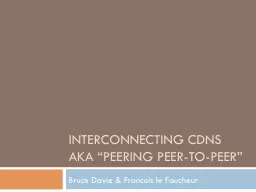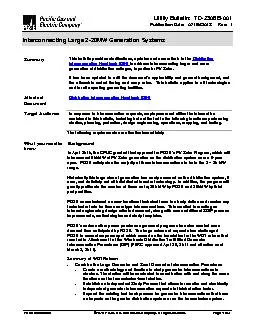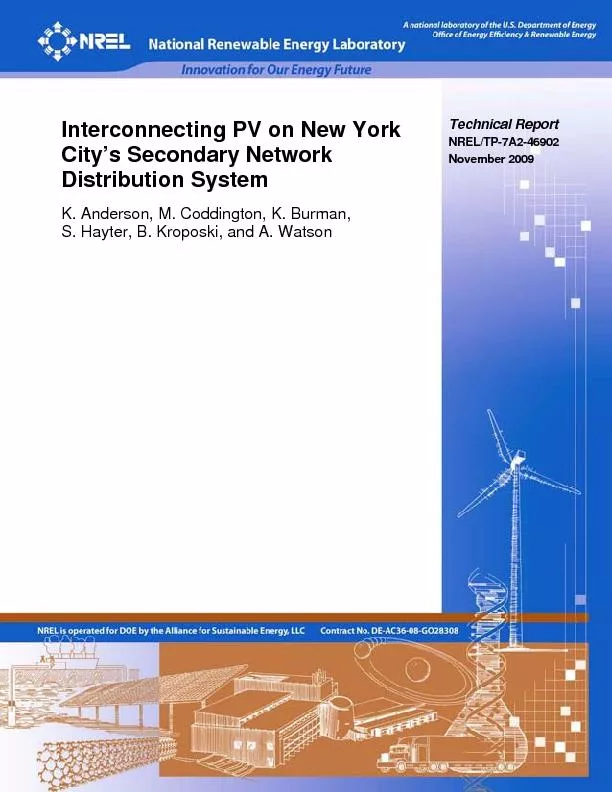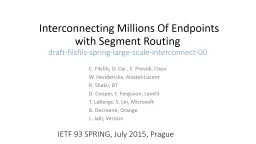PPT-Interconnecting
Author : tatyana-admore | Published Date : 2016-05-15
CDNs aka peering peertopeer Bruce Davie amp Francois le Faucheur Outline Background peering peertopeer providers CDN Interconnect Motivation CDNI Technical Issues
Presentation Embed Code
Download Presentation
Download Presentation The PPT/PDF document "Interconnecting" is the property of its rightful owner. Permission is granted to download and print the materials on this website for personal, non-commercial use only, and to display it on your personal computer provided you do not modify the materials and that you retain all copyright notices contained in the materials. By downloading content from our website, you accept the terms of this agreement.
Interconnecting: Transcript
Download Rules Of Document
"Interconnecting"The content belongs to its owner. You may download and print it for personal use, without modification, and keep all copyright notices. By downloading, you agree to these terms.
Related Documents








![[DOWLOAD]-Interconnecting Cisco Network Devices, Part 2 (ICND2) Foundation Learning Guide](https://thumbs.docslides.com/985010/dowload-interconnecting-cisco-network-devices-part-2-icnd2-foundation-learning-guide-foundation-learning-guides.jpg)
![[PDF]-Interconnecting Cisco Network Devices, Part 1 (ICND1) Foundation Learning Guide](https://thumbs.docslides.com/985029/pdf-interconnecting-cisco-network-devices-part-1-icnd1-foundation-learning-guide-foundation-learning-guides.jpg)